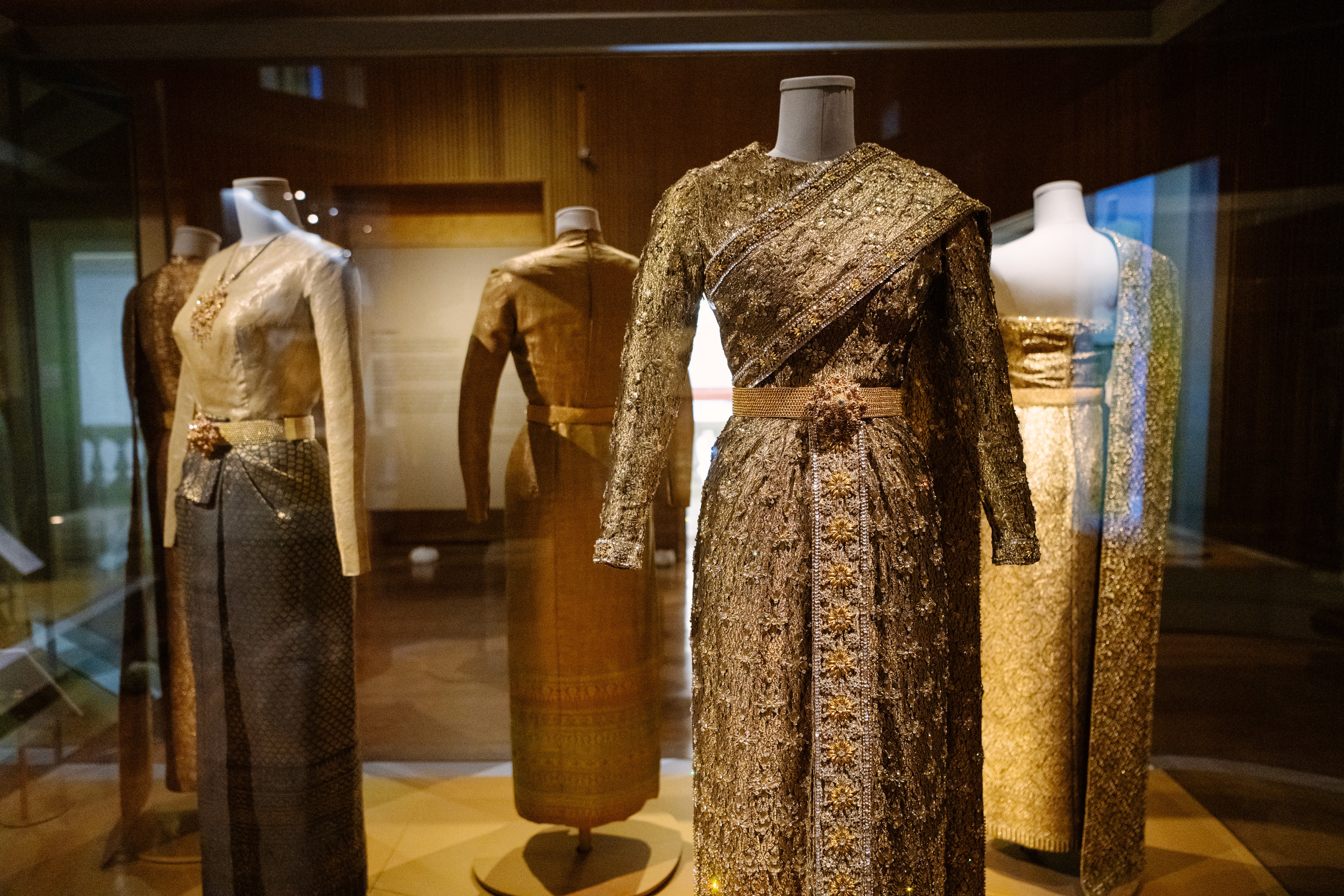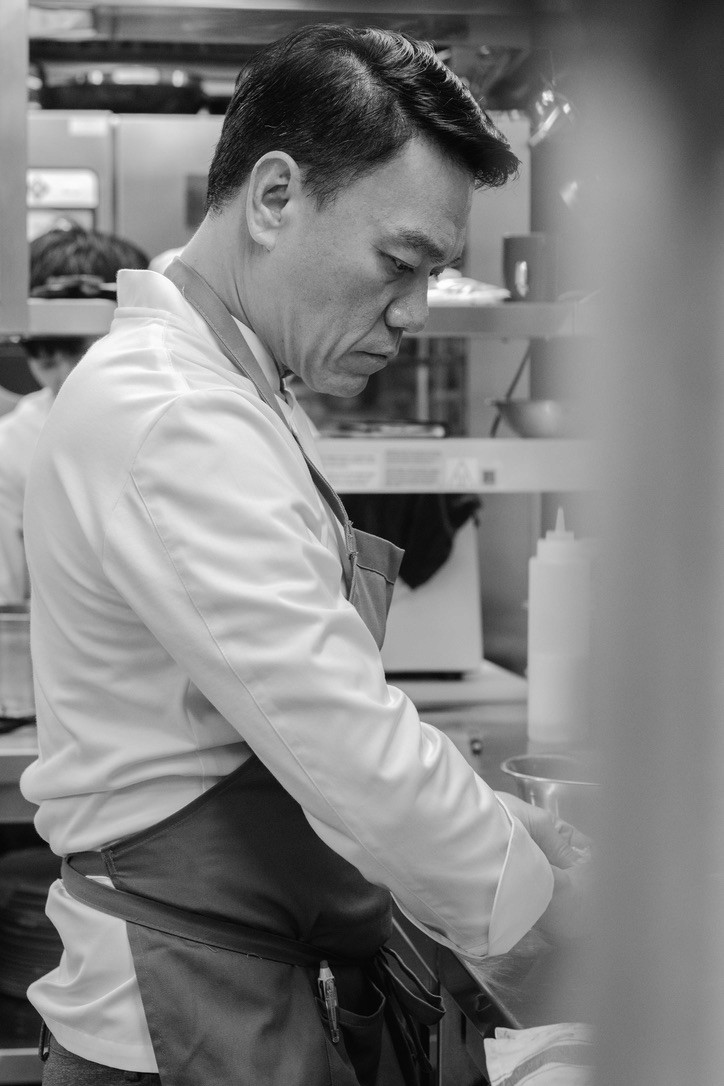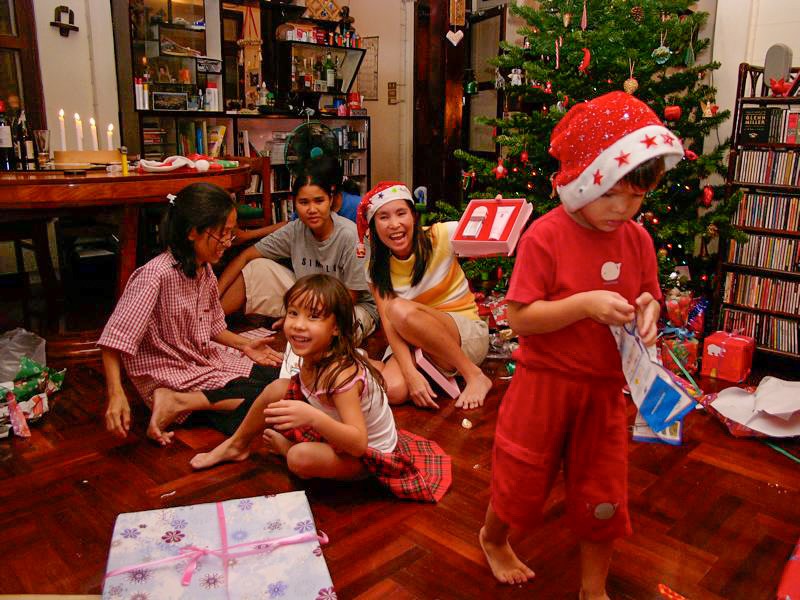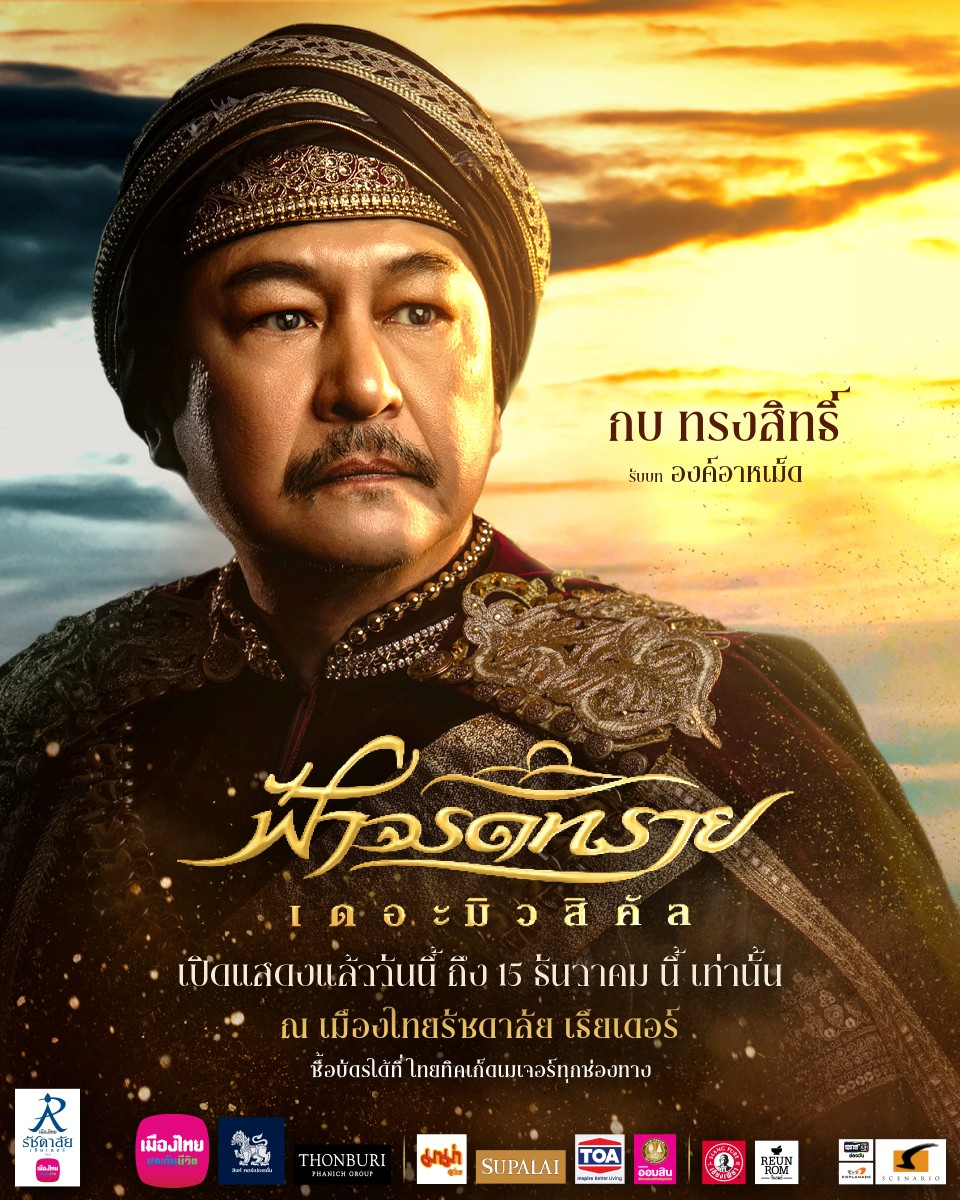Decades of Style: Exploring Queen Sirikit’s Legacy of Fashion at the QSMT
The "Decades of Style" exhibition at the Queen Sirikit Museum of Textiles honours Queen Sirikit’s profound impact on shaping Thai fashion.
By Aina Sarita Swartz
The "Decades of Style: The Royal Wardrobe of Her Majesty Queen Sirikit" exhibition at the Queen Sirikit Museum of Textiles in Bangkok celebrates the transformative influence of Her Majesty Queen Sirikit The Queen Mother on Thai fashion, both as a cultural ambassador and a global icon of style. This exhibition provides visitors with a vivid narrative of how Her Majesty’s wardrobe not only embraced Thailand's rich heritage, but also elevated it onto the world stage.
The Queen Mother’s Vision and National Dress
In the 1960s, The Queen Mother spearheaded efforts to establish a distinct national dress for Thailand. Inspired by traditional Thai garments, Her Majesty collaborated with artisans and scholars to revive and reinterpret centuries-old craftsmanship. This initiative was part of a broader effort to preserve Thai heritage and promote it internationally.

In the midst of the Cold War and the era of decolonization – when national identity was at the forefront of the global agenda – The Queen Mother's vision culminated in the creation of the "Thai National Dress." This collection was comprised of several distinct styles, including:
Thai Boromphiman: A formal evening dress with intricate embroidery.
Thai Siwalai: A sophisticated outfit with a long-sleeved top and a wraparound skirt.
Thai Chakri: An elegant traditional dress featuring a shawl-like Sabai.
These designs seamlessly blended Thai artistry with modern aesthetics, making them suitable for international diplomacy while highlighting Thailand's cultural identity.
The Role of Pierre Balmain
In 1960, His Majesty King Bhumibol Adulyadej The Great and The Queen Mother embarked on a historic state visit to 15 Western nations, marking the West’s formal introduction to the royal couple. For this six-month tour, Her Majesty engaged renowned Paris couturier Pierre Balmain to design a fashionable, seasonally appropriate wardrobe. Balmain created a collection of daytime, cocktail, and evening dresses, ensuring each piece exuded timeless elegance. His designs featured jackets and dresses with small ties, obi-like sashes, draped effects, and lavish bows, along with large silk flowers on lapels or bodices. Additionally, Balmain coordinated the purchase of all accessories, including hats, fur coats, and stoles, working with both internal and external sources to create coordinated ensembles.

Balmain, in collaboration with François Lesage (who did the embroidery for Her Majesty’s formal clothes), remained intricately involved with the development of The Queen Mother’s style for 22 years. In addition to their Western-style ensembles for Her Majesty’s international voyages, Balmain and Lesage also worked to bring Her Majesty’s vision of a Thai national dress to life utilising the Thai village silk created through the SUPPORT foundation. In the early 1970s, they started employing these materials to create Her Majesty’s Western-style attire as well. Their collaboration fused traditional Thai elements with modern Western fashion, helping to showcase Thai craftsmanship on the global stage and promote the work of the Foundation for the Promotion of Supplementary Occupation and Related Techniques (The Support Foundation) far and wide. One technique involved incorporating unconventional local materials such as feathers and insect shells into the weaving process, creating a unique and delicate design.

Thus, few artists can claim to be as influential in their contributions to The Queen Mother's fashion sense as Pierre Balmain. His creations for Her Majesty’s wardrobe featured timeless silhouettes and intricate details that complemented her poise and stature, ensuring that Her Majesty’s ensembles resonated with Western trends while honoring Thai traditions. Balmain’s creative endeavours contributed to Her Majesty's position as a standout figure in not just the Thai fashion world, but on the global fashion stage as well.
The Queen Mother's Initiatives in Textile Preservation
Beyond her wardrobe, The Queen Mother championed numerous initiatives to preserve and promote Thailand's textile heritage. In 1976, Her Majesty founded the Foundation for the Promotion of Supplementary Occupation and Related Techniques (The Support Foundation). This organization empowered rural communities by revitalizing traditional crafts, particularly silk weaving. The Support Foundation's efforts brought global attention to Thai silk and provided sustainable livelihoods for countless artisans.
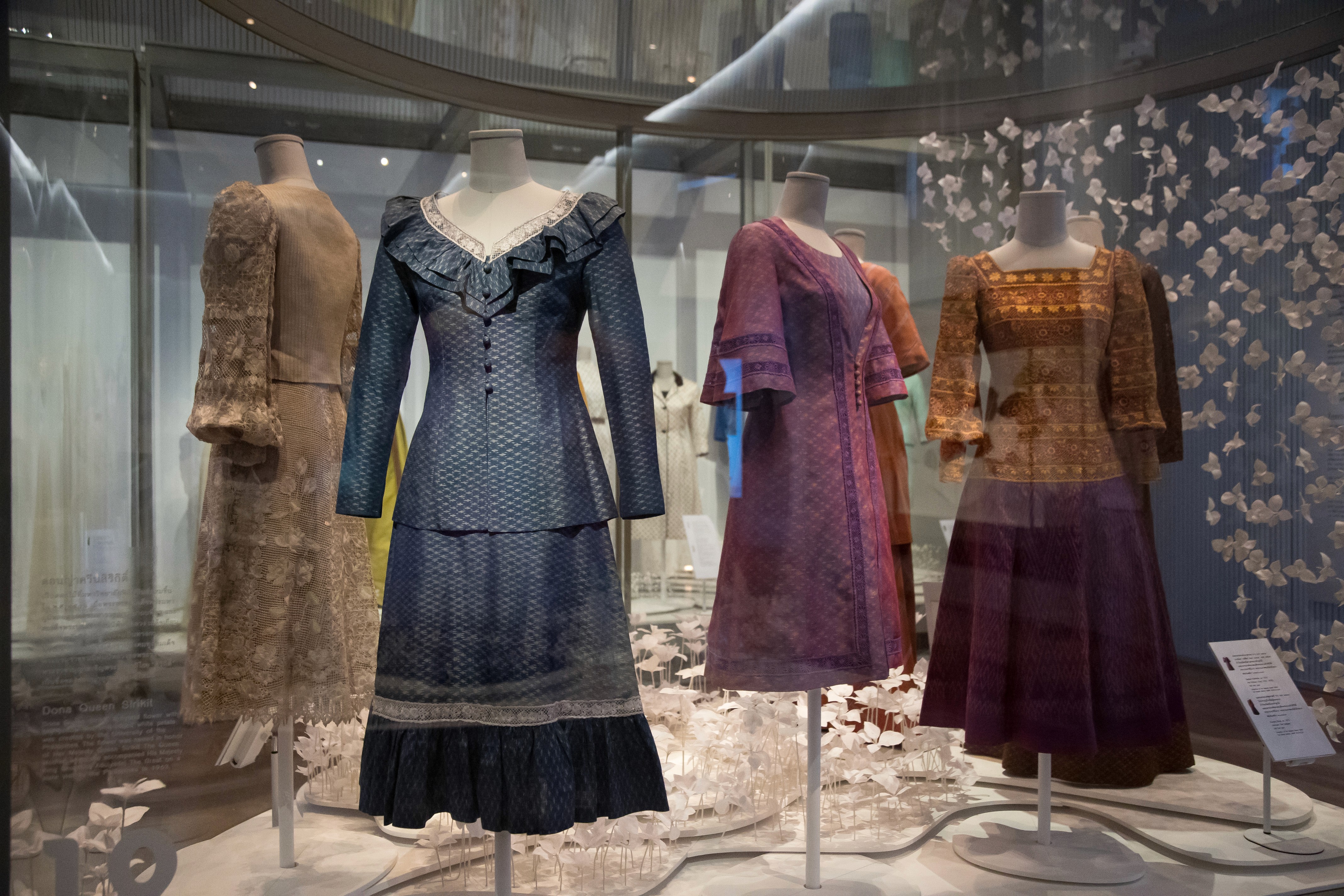
The Queen Mother's support of textiles was also deeply intertwined with Her Majesty's vision for sustainable development, ensuring that traditional crafts remained relevant and appreciated in the modern era.
Exhibition Highlights
The "Decades of Style: The Royal Wardrobe of Her Majesty Queen Sirikit" exhibition showcases an impressive collection of The Queen Mother's iconic ensembles. Visitors can expect to see:
Original Creations by Balmain: Dresses and gowns reflecting Her Majesty's elegance and the harmonious blend of Thai silk with couture design.
National Dress Styles: A detailed exploration of the evolution of Thai National Dress, with displays explaining the cultural significance of each style.
Multimedia Displays: Archival footage and photographs of The Queen Mother during state visits and public appearances, showcasing Her Majesty's role as Thailand's cultural ambassador.

Legacy and Sustainability
The visionary foresight of The Queen Mother is reflected in the elegant novelty of Her Majesty's attire, which has become a bold statement in design. Combining creativity with the preservation of culture and craftsmanship, Her Majesty's contributions not only established a distinct identity for traditional Thai national costumes, but also elevated Thailand to a global center of art and culture. This exhibition serves as a reminder of Her Majesty's enduring legacy in promoting Thai heritage, advancing local wisdom in a remarkable way.
The Queen Sirikit Museum of Textiles, located within the Grand Palace complex, offers a fitting venue for this homage. It stands as a testament to Her Majesty's lifelong dedication to preserving Thailand’s rich artistic traditions.
Visitor Information
The museum is open daily from 9.00am – 4.30pm (last admission is at 3.30pm)
Admission prices for visitors to the Grand Palace:
Admission to the museum is included in your entry fee. Please show your palace ticket at the ticket desk for museum admission.
For those wishing only to visit the museum:
Adults: 150 baht
Seniors (over 65): 80 baht
Students (with ID): 50 baht
Youth (12-18): 50 baht
Children (under 12): Free
For more information, please visit https://www.facebook.com/qsmtthailand
MORE STORIES
The Art of Thai Cuisine: Chef Ian Kittichai’s Culinary Canvas
By Aina Rita Swartz
How to Have a Scandinavian Christmas
By Aina Sarita Swartz
Centre Stage: Khun Kob Songsit on Life, Art, and Musical Magic
By Aina Sarita Swartz
Unlocking the Secrets Behind Taiwan's Film Success with the Creative Forces Behind Its Global Sensation
Creating Innovative Textile Substitutes from the Use of ‘Soil’
Text by Dr. Khajornsak Nakpan
Bangkok with Elle
Elle
Photo Essay BAC x RPST
Words by RPST & BAC EDITORIAL
